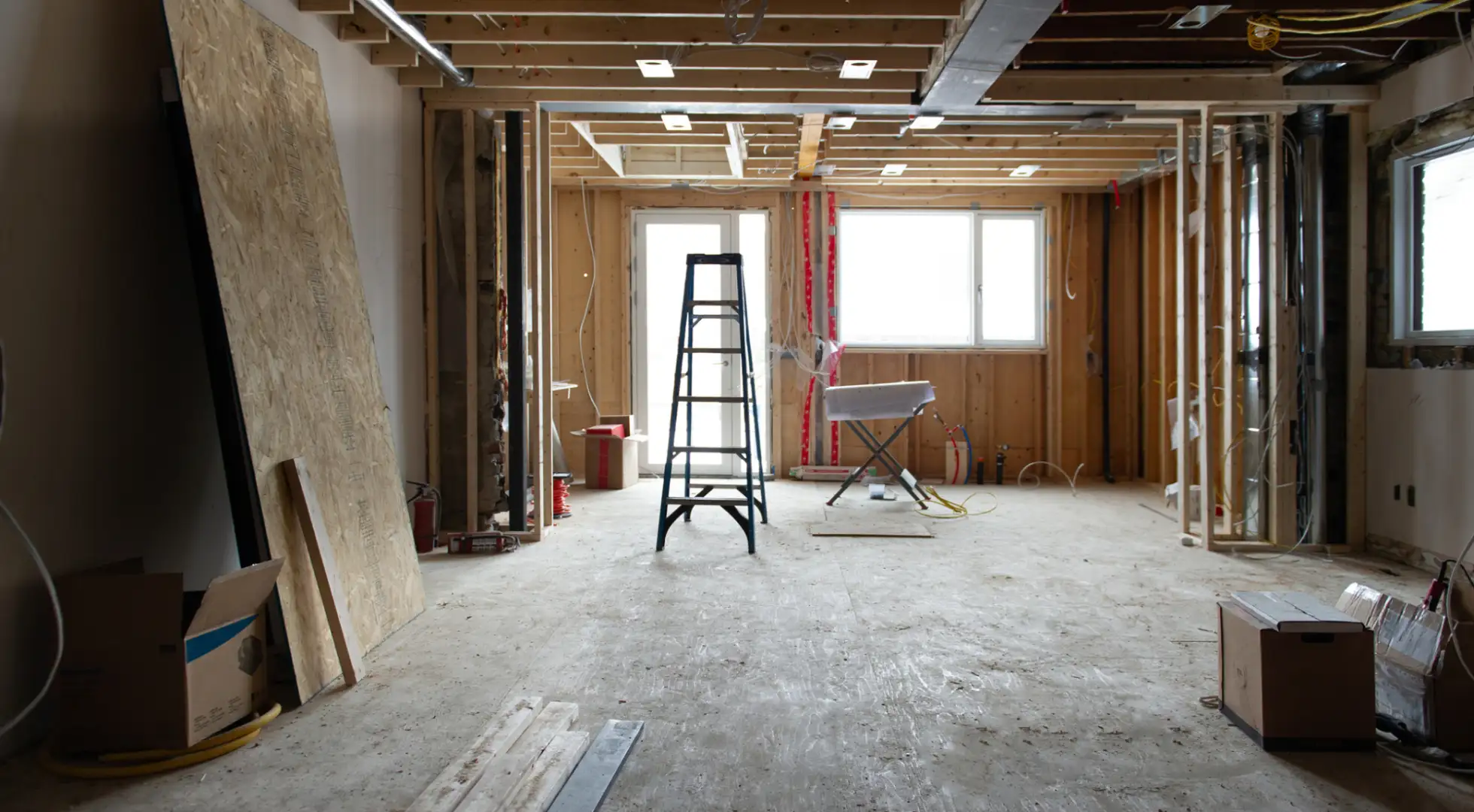How to Use a HELOC to Start a Property Flipping Business

Property flipping – purchasing a home, adding value, and then selling it for a profit – can be an effective way to get into real estate investing.
But where do you get the funds for your first deal? If you have equity in your current home, you may be able to use a HELOC to start your property flipping business.
Why Use a HELOC to Start a Property Flipping Business?
Using a HELOC is one of the most common ways for new investors to get into property flipping. With a HELOC, you can purchase, rehab, and flip a property without having the funds in savings or pulling them from other investments.
Many lenders allow you to access up to 85% of your home’s value with a HELOC, although 100% LTV HELOCs are available through some smaller community lenders and local credit unions.
Investors with sizeable equity can use their HELOC to cover the total cost of purchasing and rehabbing their target property. Others, with less built-up value, can still use a HELOC to cover the down payment or improve their flip while utilizing other funding sources for the difference.
Sometimes, even flippers with an extensive line of credit will still incorporate other types of funding to limit their personal investment in each property and stretch their HELOC further.
Regardless of your investment strategy, some of the advantages of using a HELOC to start your property flipping business include:
Property Condition Doesn’t Matter - A good value-add property won’t qualify for traditional financing due to its condition. But you can use a HELOC because it’s attached to your primary residence, not the property you plan to flip.
Revolving Line of Credit – Your HELOC is a revolving line of credit. You can reuse it as many times as you want throughout the initial draw period, which lasts up to 10 years, by paying off the balance after each flip.
No Balance = No Interest Payments – Similar to other lines of credit, like credit cards, you only pay interest on your outstanding balance. If you're waiting to make your first purchase or have your balance paid off in between flips, you aren't accruing any interest.
Interest-Only Payments – Most HELOCs allow you to make interest-only payments during your draw phase. This can mean lower monthly costs for your flip compared to other types of loans, which may also require principal repayment.
Lower Closing Costs – Reusing your HELOC for each flip helps to avoid some of the closing costs associated with taking out a new loan.
Close Quickly – Your line of credit can be used like cash. If you're funding the entire purchase with your HELOC, you can close as quickly as the title company can process the paperwork.
Lower Rates for Some Investors – A HELOC is a type of second mortgage (in most cases) and will have an interest rate higher than a typical first-lien loan. However, taking out a HELOC on your current home will likely offer lower rates than some alternative types of investor financing, such as hard money lending.
It's worth noting that while most people get a HELOC on their primary residence, there are additional options. If you already own other real estate, some lenders also issue second home and investment property HELOCs.
How Does a HELOC Work When Flipping Properties?
A HELOC is a revolving line of credit tied to the equity in your current home. You can use the line for almost any purpose, including the purchase and improvement of a run-down property.
HELOCs are typically structured into two phases: the draw and repayment periods. In most cases, the draw period lasts five to 10 years, allowing for an interest-only payment on your current loan balance.
The repayment period follows the draw, lasting from 10 to 20 years. During this phase, you can no longer borrow against your line of credit, and your outstanding balance is amortized across the remaining term.
The most significant advantage of using a HELOC to start a property flipping business is that you can reuse your line of credit as often as you want during the draw phase.
This means you can:
Purchase your first flip (whether funding the entire cost or just the down payment)
Use your HELOC or other funds to make value-adding improvements
Sell the flip and use the proceeds to pay off your HELOC balance
Repeat as many times as you want until the end of your draw phase
Close out your HELOC or let the draw phase end with no balance (some HELOCs may have early closure fees)
Open up a new HELOC and keep flipping properties
Downsides of Using a HELOC to Finance a Flip Deal
The biggest downside to using a HELOC for flipping is that it encumbers your existing property. If you run into issues making your HELOC payment, the home with the line of credit would be at risk of foreclosure. This could be catastrophic for investors who take out a HELOC on their primary residence.
Most flippers with reserve funds will have little issue making interest-only payments on the HELOC balance during their brief holding period. But problems can arise. Some things that could cause you to default on your loan include:
Personal financial issues that cut your income or raise other expenses
Underestimating repairs and lacking funds to finish improvements
Market changes that make the property more difficult to sell
Rising interest rates that increase your required monthly payment
HELOC rates are usually variable, meaning they will increase if overall market rates rise. However, unlike other adjustable-rate mortgages, the interest on a HELOC can change monthly. Your payments could jump overnight if you carry a balance and the market moves suddenly.
HELOC Alternatives for Funding a Property Flipping Business
Taking out a HELOC can be a fast and affordable way to fund flip deals. However, there are other alternatives for starting a property flipping business. In certain scenarios, new investors may want to consider these HELOC alternatives instead.
Conventional Rehab Loans
With a conventional rehab loan, you can finance the purchase price and cost of improvements for a fixer-upper property. Both Fannie Mae’s HomeStyle Renovation and Freddie Mac’s CHOICERenovation programs allow single-unit investment properties to qualify.
Eligible borrowers can get an investment rehab loan with as little as 15% down, although most investors aim for at least 20% to avoid paying for private mortgage insurance.
Unlike traditional mortgages, which are calculated based on a property's current appraised price, fixer-upper loans are based on the projected after-repair value. This provides access to more funds for repairs in most cases.
Another benefit is that the mortgage is secured by the subject property – it doesn't encumber your existing home.
On the downside, a conventional rehab loan requires you to go through a complete underwriting process. This could make it impossible to acquire the best properties that are usually snatched up with cash.
A rehab loan could exclude some properties if their condition is unacceptable to the lender. Rehab loans also have more oversight on how the renovation funds are used.
Hard Money Loans
Popular among real estate investors, hard money loans are based more on the profitability of your flip and less on your personal finances. If you have a promising deal that makes sense on paper, a hard money loan can get your purchase funded quickly.
Typical hard money loans have interest-only payments, similar to the draw phase of a HELOC. In most scenarios, lenders will also let you wrap in your rehab costs.
Like a conventional rehab loan, hard money loans are secured by the property you're flipping. However, many investors still use a HELOC to fund their flip's down payment and then cover the remainder and the renovations with hard money.
The downsides to hard money loans include higher interest rates than most HELOCs and closing costs that must be paid on each new loan.
Plus, hard money loans have shorter repayment terms: one to three years. This won't be a problem in most cases. But issues can arise if you get stuck holding a flip longer than planned. If that were to happen, you could be forced to refinance your loan, which may not always be possible.
Home Equity Loans
Similar to a HELOC, a home equity loan is a type of second mortgage that lets you borrow against the built-up equity in your property.
Unlike a HELOC, however, home equity loans do not have a revolving line of credit – you get all the funds upfront. When you repay the balance, the loan closes. You must apply for another mortgage to tap into your equity again.
Also, you begin paying towards your balance as soon as you take out the loan. If it takes a while to find the perfect flip, you'll still be stuck making monthly payments.
On the other hand, home equity loans usually have fixed rates. This means you can borrow the funds to start your flipping business without worrying about payments increasing.
Cash-Out Refinances
Using a cash-out refinance on your primary residence can be a savvy move if you can lower your current mortgage rate at the same time.
Some homeowners might find today's cash-out refinance rates to be lower than what they got during the highs leading up to 2023's interest rate peak. This may be especially true if your credit score or finances have improved since you took out your original loan.
Closing costs will be higher on a cash-out refinance than most other types of funding and you’ll start paying interest on the entire borrowed amount right away.
Use Your Home Equity to Start a Property Flipping Business
If you're thinking about getting into property flipping and plan to use your home equity, talk with a lending professional to discuss your options.
While a HELOC can make sense for many investors, an experienced mortgage broker or loan officer can help you explore alternatives that may be a better fit for your borrowing needs.






